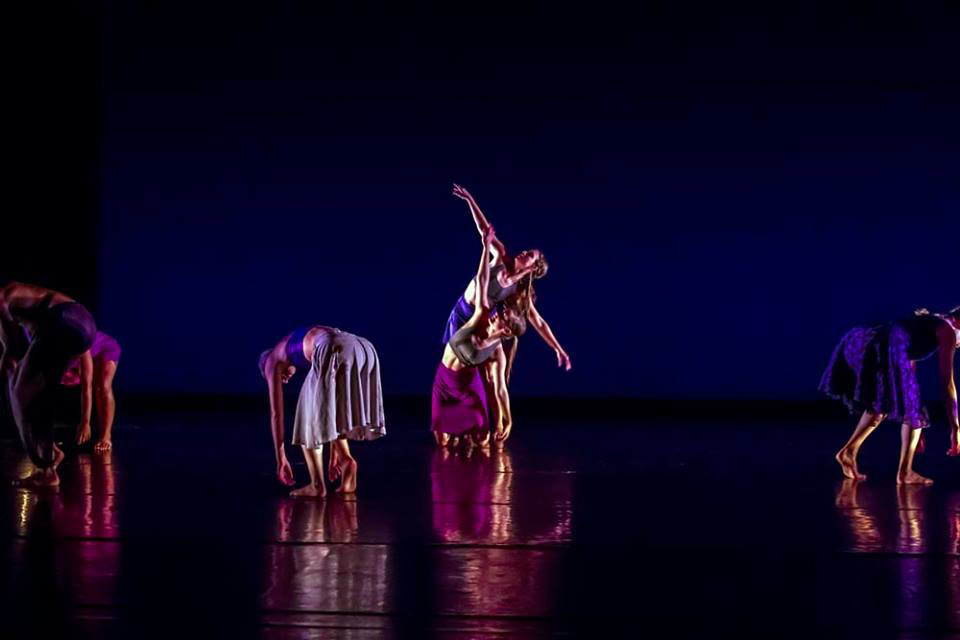Two Appalachian State dance students had their choreography adjudicated by three professional choreographers from the American College Dance Association. The conference was held at West Virginia University on March 18-21. While at the conference, the students attended master classes, discussions and concerts.
Between November 2015 and March 2016, senior dance studies majors Nisha Jackson and Raquelle Pollock prepared their own choreographed routines and had them performed and judged individually. To help the process, ASU sophomore and junior dance students volunteered to perform the routines. The students were chosen to attend the conference after their performances at the fall Appalachian Dance Ensemble Concert in November 2015.
Jackson and Pollock were both chosen to attend the ACDA. Jackson choreographed the dance “Pendulum” and said that the dance is an exploration of the emotional stages in the Pisces zodiac sign.
Jackson’s piece included eight dance students: Erin Brathwaite, Jordan Ballard, Alaina Brown, Montana Bright, Brielle Cornacchio, Jason Dawkins, Sarah Quinn and Makaleigh Smith.
Pollock’s piece was called “Rememory” and had a cast of five dance students: Erin Brathwaite, Samantha Hunter, Zoe Reddig, Natalie Willmschen and Katie Woodruff. Pollock said that her dance focused on “the people and conversations that we carry with us in our memories.” She said that it was an amazing learning experience and she was thankful to the department of theatre and dance for giving her an opportunity to grow outside the university setting.
“I was working on the routine since September, but spent months working on it since then,” Pollock said.
After this performance, Jackson and Pollock were both selected by the department of theatre and dance to attend the ACDA to have their work adjudicated.
Laurie Atkins, associate professor of dance studies attended the conference and said that the performances went really well. Atkins said that the constructive criticism from the adjudicators was a stepping stone for the students and was key to their growth.
Cara Hagan, associate professor of dance studies also attended the conference and said that the conference is not periodically attended by the department, and the goal is to showcase students’ work, not faculty. Hagan said that the lighting designer for “Pendulum” received very positive feedback, which is rare because adjudicators do not usually pay attention to the lighting and design crew, Hagan said.
Jackson said she was very thankful to be given the opportunity to show her work to other dancers outside of Boone and it was a great learning opportunity to grow as a choreographer.
Jackson and Pollock had to teach their peers the sets they had prepared on their own. Both students explained that they had a great deal of freedom in the preparation of their performances. Jackson and Pollock said that these months were not without problems, but they were pleased with their outcomes.
One problem that Pollock mentioned was striking the balance between friend and choreographer. Her dancers were her peers and friends, and she said that sometimes it was hard to start practicing intensely after chatting and joking during rehearsals.
“It was hard, but I think I found a way to get them to practice,” Pollock said. “They knew it meant a lot to me so they gave their best.”
Their best was also noticed by the experts that judged their performance. One of the most notable pieces of feedback was the great synergy and chemistry that the dancers shared during the performance, Pollock said. Which she considered to be great news, because it demonstrated her desired theme and mood she strived for in the routine.
“It was all about swaying, rocking and moving together,” Pollock said. “I’m really proud of their performance.”
Like Pollock, Jackson said she was very happy with how her dancers performed. Unlike Pollock, Jackson did not talk about her troubles organizing her dancers. She is the president of the dance club Entropy on campus and said she is “no stranger to leadership.”
The club is focused around individual students creating choreography for their fellow members to perform. The student choreographer rotates as the semester progresses allowing each student to showcase their abilities in a more public way.
Many of the students in the club are dance studies majors themselves and want to seek a career in the field, Jackson said.
“Most people are there to dance, but a few want to choreograph primarily,” Jackson said.
Jackson plans on attending graduate school at North Carolina A&T in Greensboro, where she wants to stop dancing and instead become an elementary school teacher.
“I’ve had enough dancing so far,” Jackson said. “But I still love it and like choreography.”
Pollock, on the other hand, wants to continue her career in dancing. She said she really enjoys dancing more than choreography and wants to continue to improve. Pollock is waiting to hear back from a few dance programs, including one sponsored by Disney, and is optimistic that she’ll find work doing what she loves.
Story by: Mike Hebert, A&E Reporter

